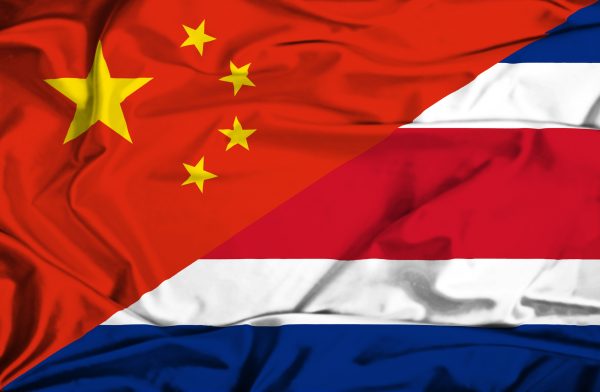
Securing diplomatic recognition in Central America has been a key element for China in upholding its “One China principle.” Of Taiwan’s 14 diplomatic allies, three are in Central America: Belize, Guatemala, and Honduras. Many of the region’s other countries only recently switched their recognition away from Taiwan to China: Panama in 2017, El Salvador in 2018, and Nicaragua in 2021. But the first switch in this region came in 2007, ten years before any of its neighbors would follow.
In June 2007, Costa Rica became the first country in Central America to switch recognition from Taiwan to China. The decision was driven by a strong belief that moving toward China would help improve Costa Rica’s economy and attract foreign investment.
After 15 years of economic partnership, however, Costa Rica’s government has failed to make the most of economic and commercial relations with China. Indeed, data from the Secretariat for Central America Economic Integration (SIECA) show that exports from Costa Rica to China declined from $835 million in 2007 to $308 million in 2021, while Chinese foreign direct investment fell from $2 million in 2007 to $600,000 in 2021.
Several factors contributed to this decline. Some are external, such as the multinational corporation Intel’s 2014 relocation of its factory to Malaysia, which impacted Costa Rica’s largest source of exports to China. More recently, the COVID-19 pandemic sharply curtailed China’s imports from countries around the world and Chinese direct investment has also fallen sharply amid the economic turmoil.
The other factors, however, are internal. Costa Rica’s government lacks a strategy to promote exports or attract more investments. Furthermore, its cumbersome legal procedures are a barrier for investors. These dynamics have led to an unfavorable trade balance for Costa Rica, which reached negative $2.6 million in 2021, and a 70 percent decrease in Chinese investment since the establishment of diplomatic relations. Although Costa Rica has a free trade agreement and investment treaty with China, the Costa Rican government itself has admitted to its lack of a strategy to take advantage of those agreements.
China-Costa Rica economic relations have also suffered from a shortage of mechanisms to translate its accords into action. Costa Rica has signed a series of agreements and memorandums of cooperation such as an action plan framework for cooperation between both governments from 2016 to 2020. There have, however, been no mechanisms for implementing the various measures proposed in the plan. Data show that bilateral cooperation – defined by Costa Rica’ government as both aid and assistance, as well as loans – decreased from $180 million in 2006-2008 to $8.4 million in 2020-2021. The COVID-19 pandemic clearly impacted these relations, as China focused on domestic issues during the latter period. In 2022, both governments expressed an intention to generate greater development in bilateral cooperation after the pandemic, but no concrete actions were observed.
Finally, Costa Rica lacks a pool of qualified policymakers equipped to engage China-related issues. Not only Costa Rica, but most Latin American countries need to commit themselves to promoting research and training public officials to address China’s economic presence based on long-term goals. Therefore, it is necessary to have experts from the Costa Rican government, who can design, develop priority strategies, and identify key export or investment sectors that are aligned with the government’s interests. Moreover, such technocrats could help Costa Rica’s government create a research development center encompassing academics and actors from the private sector and civil society who could collaborate to develop more strategic and comprehensive policies.
In sum, despite original optimism, the economic engagement between China and Costa Rica has disappointed. The new Costa Rican government elected in May 2022 and has reaffirmed its commitment to the “One China principle” and pursuing economic development through relations with China, but is in need of a political strategy that improves the trade and investment dynamics between both countries.
A path forward must have three aspects. First, a strategic policy that identifies key areas for export and service diversification, selects investment sectors that generate higher revenue, as well as improves its legal procedures. Second, an effective bilateral cooperation mechanism should include a monitoring and evaluation system as components to follow up on agreements, including the possibility of third-party impartial adjudication. Third, the government must build up a network of Costa Rican public officials who are experts in China studies to help the country develop strategies that boost its economic and commercial relations.
Did Costa Rica’s Decision to Recognize China Pay Off?
Source: Frappler

0 Comments